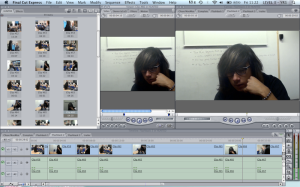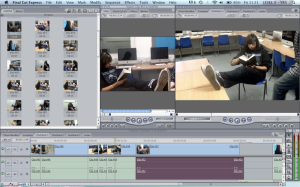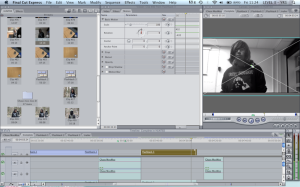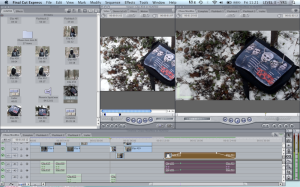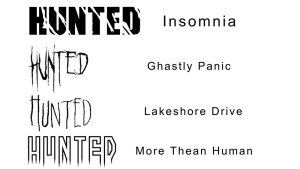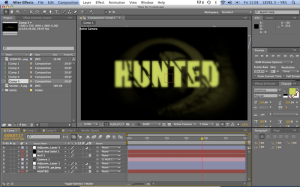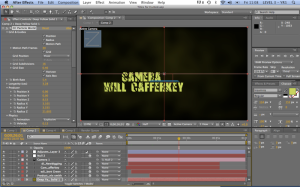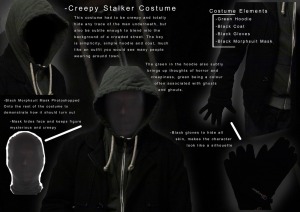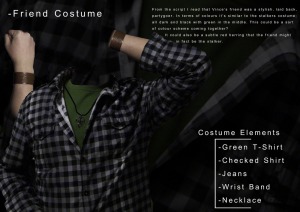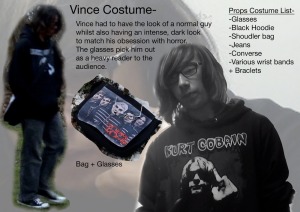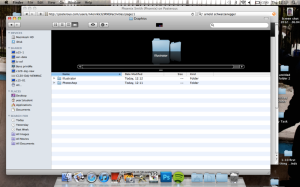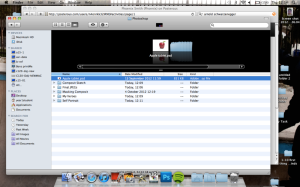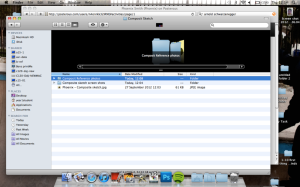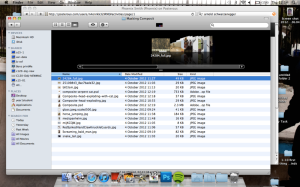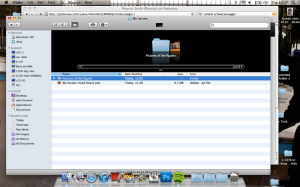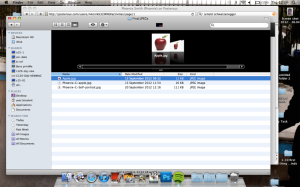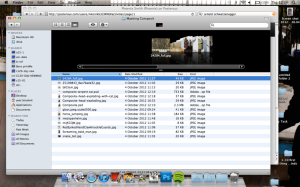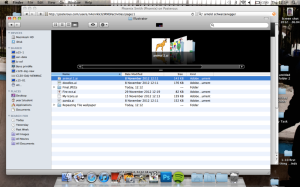The 40’s & 50’s theatrical and TV serials
(Batman and Robin) (The Adventures of Superman)
The old super hero serials featured clean cut heroes fighting real world villains like criminals and gangsters. The style was very much of the time, audiences wanted heroes who would fight real villains in the world and make them safer.
The heroes here aren’t really characters, presented more as mythic figures. They don’t have personal problems, don’t develop as people, and aren’t face by any sort of moral dilemmas.
Batman TV show (1966)
Whilst the 60’s show was still about Batman and Robin working with the police and fighting crime this show was far more over the top then the serials. Batman now fought a colourful range of super villains and their bizarre plots rather than normal gangsters. The action was now slapstick, with comic book sound effects overlaid onto the fight sequences.
This Batman was more about escapism. The hero was happy and friendly and clearly good whilst he fought demented and clearly evil villains. Real world problems never come into the equation.
Superman (1978)
Richard Donner
The first ever Superhero film, Superman sees the man of steels journey to becoming a hero and him saving the day.
The film isn’t much different from the Superman theatrical serials. It features Superman saving Lois Lane from real world dangers rather than over the top super powered villains. The difference here is that the dangers are natural disasters which do make the film bigger in scale and budget. Rather than fighting gun wielding gangsters Superman has to combat crashing helicopters and earthquakes. The movie exists in a very stylized and simplistic world and doesn’t really represent anyone truly evil and sinister. Even the villain of the film is more comic rather than sinister. The film is more about the concept of a hero saving people, rather than the battle between good and evil. It’s clear escapism, not meant to uncover harsh truths or bring up moral dilemmas like later films in the genre.
Richard Donner’s goal with this film was to make the audience “believe a man could fly”. Because of this a lot of attention was given to the effects of Superman This is why in the script Superman is constantly battling huge elements and crashes rather than single gangsters, it’s all to show off his powers, to make the film a spectacle for the audience. This started an effects battle in each subsequent film of the genre. Every director battled to add more grand and realistic special effects to their film.
Batman (1989)
Tim Burton
Batman 89 is a huge departure from the 60’s show. The campy puns and slapstick action are gone for intense gothic design and a brooding anti-hero.
Whilst this version of Batman does have many similarities to the old serials; Batman fighting gangsters in a crime ridden city whilst occasionally pretending to be Bruce Wayne, The Burton film is also very different.
The film obviously has a larger budget and uses it to create a dark and gothic world and look for Batman. Batman also runs into conflict with the police in the film, whereas in the serial and the TV show he worked closely with the police and commissioner. Batman also has a far darker and intense personality that distances him from the audience and makes him an intimidating figure.
All of this turns Batman into an almost anti-hero.
The absence of Robin perfectly demonstrates how the character has developed; He’s now a solitary hero and the tone is too dark for a pixie booted side kick. Like Superman, this Batman film presented a stylized world with an iconic hero rescuing his love interest from his classic nemesis. However this film was much darker then Superman with violence, gritty streets, and a sadistic and disturbing villain in the Joker.
Despite being dark visually and violent, the film doesn’t feature any heavy morals or issues being discussed. The hero and villain are clearly defined and neither really have any psychological or emotion journey or struggle. Whilst Batman’s feelings about his dark past are touched upon they don’t develop over the film and aren’t explored in depth.
This was a big development towards what the genre is today, giving super heroes a dark edge, rather than the bright and bouncy romanticism of Superman.
The entire tone of the movie comes from director Tim Burton. He’s shown in his other films that he identifies with the misfits and the outcasts, and enjoys dark gothic worlds. The film is very much Batman through Tim Burton’s eyes and whilst the stylish production design slowly left Batman over the years, with the character becoming more gritty, the darkness given by this film stayed in the character and the superhero genre as a whole. With the success of this movie studios realised super heroes could be dark.
Batman and Robin (1997)
Joel Schumacher
The final and overly campy instalment in the original Batman series, which tried to create a family friendly adventure for Batman and Robin.
Batman and Robin brings nothing new to the genre, if anything it’s a step back to the campy Batman TV show of the 60s. The world is highly stylized with bright neon colours, like it’s trying to appease the rave/punk crowd, whilst the action and dialogue is cartoonish and unintelligent. Maturing comic book fans did not take kindly to this dumbing down and so the film was unsuccessful. This film killed of not only the Batman franchise but also superhero movies as a whole for a long time. But the fact that it failed so badly also proved that audiences where ready for darker, more mature superhero movies. It triggered the film industry to try something different with the genre, to go darker.
Compared to Tim Burton’s first Batman this had a massive change of tone, however one the franchise had been sliding towards since Batman Forever. Gone was the dark stylization and themes of outcasts and misfits.
The films production was motivated by money and it was made in an attempt to create a film that would sell toys to children. As such there isn’t much artistry in any department, from Director to actors.
X-Men (2000)
Bryan Singer
X-Men kick started the superhero film boom we are experiencing to this day with a darker look at heroes, making the X-Men struggling outcasts with relatable issues and giving the villains strong motives and emotions. This was also the first time that superheroes costumes where altered for a film, swapping the yellow and blue spandex for black leather.
This is the first example of the heroes being relatable, struggling to accept and use their powers rather than being more mythic and stoic like Superman or Batman.
X-Men also developed the use of CGI in super hero films. The film uses computer effects to achieve the powers of all the x-men.
Spider-Man (2002)
Sam Raimi
Spider-Man continues the relatable hero started in X-Men. Peter parkers problems are just as important as Spider-Mans which is a first. However the film is not as dark as X-Men and has a lighter, more comic book tone that almost feels like a step back to the Superman film.
CGI really takes a leap here. Spider-Man’s acrobatics had previously been unachievable as shown in the rather poor attempts in the amazing spider-man TV show. However this film showed how CG could be used to more accurately portray comic book characters and they’re super powers. The films use of effects, using them as spectacle, changed the playing field of the genre. Now with each film filmmakers where trying to outdo the last in terms of scale and quality of effects work.
Batman Begins (2005)
Christopher Nolen
Batman Begins was a dark and gritty reboot of the Batman franchise. This film was the first time a super hero movie had been taken so seriously. Not only is the world treated realistically but also the emotions and motivations of characters are more complex. Ra’s al Ghul was not a villain for the fun of it, he believed himself to be the hero and making the world better by destroying Gotham.
For Batman this was a huge change in tone, the last movie being Batman and Robin, which presented a more cartoon and slapstick look at the crime fighter. Around 2005 the genre was beginning to mature; more adult themes and complex motivations in films such as Spider-Man and X-Men. However these films still had very strong comic book roots in terms of stylization and action scenes. Batman Begins marked the start of super hero movies truly grounded in reality in terms of style, storytelling and characters.
Keeping with the times Batman is portrayed as a vulnerable hero, struggling to overcome his own fear and torment. Whilst this is a big leap from previous Batman films it isn’t that removed from films of its time; Spider-Man and X-Men, which also featured struggling and vulnerable heroes. However this Batman has by far the most daemons of any super hero in the genre
In an effort to maintain the realistic tone Christopher Nolen used mainly practical effects for stunts and model work.
As an independent film director, Christopher Nolen brought a Batman film that examined the character on a more personal level, what it takes to turn a man into a superhero, rather than focused on blockbuster action.
Kick-Ass (2010)
Matthew Vaughn
An action comedy about a teenage comic geeks decision to become a real life super hero.
Kick-Ass brings the super hero movie up to date by putting in all the elements audiences are interested in currently; realism and humour. The film also continues the idea started by Iron man, of staying very visually true to the comics. The film also takes the relatable hero to a new extreme, having the hero be exactly the audience type the film is pitched at. This was the first film to feature a normal person attempting to become a superhero, with no gadgets or super powers.
The realism and stylised violence all come from director Mathew Vaughn. His previous credits are all very gritty and violent gangster films but also the fantasy ‘Stardust’. Vaughn’s very violent and black sense of humour change the super hero film into a stylistic, violent, and twisted comedy.
